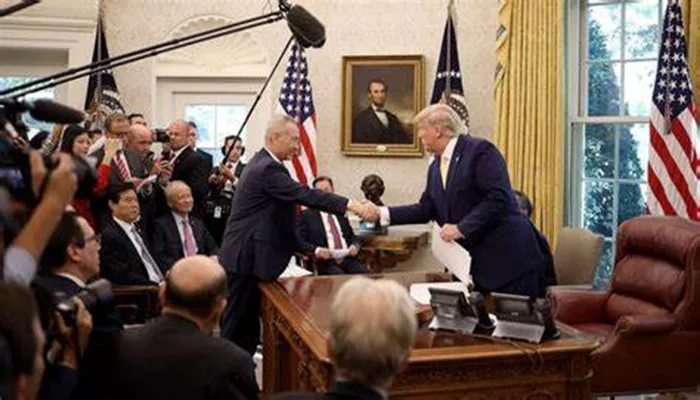In a significant move to defuse escalating trade tensions, the United States and China have agreed to temporarily lower tariffs on each other’s products. This strategic decision offers the world’s two largest economies a three – month window to work towards a more comprehensive trade agreement, signaling a potential shift towards more amicable economic relations.
According to a joint statement and official briefings held in Geneva on Monday, the U.S. will reduce its combined 145 percent levies on most Chinese imports to 30 percent, including the rate related to fentanyl, by May 14. Simultaneously, China will cut its 125 percent duties on U.S. goods down to 10 percent. Treasury Secretary Scott Bessent emphasized, “We are in agreement that neither side wants to decouple,” highlighting the mutual desire to maintain economic ties. Bessent also noted that the discussions on fentanyl were “very robust and productive” and suggested that the ongoing talks could lead to China increasing its purchases of American – made products. He further expressed the U.S. interest in seeing China open its markets wider to U.S. goods, stating, “We expect that as the negotiations proceed, that there will also be the possibility of purchase agreements to pull what is our largest bilateral trade deficit into balance.”
It’s important to note, as Bessent clarified, that these tariff reductions do not apply to sectoral duties imposed on all U.S. trading partners, and the tariffs put in place during the first Trump administration on China remain. When questioned about how to avoid the resurgence of tariffs at the end of the 90 – day period, Bessent hinted at the possibility of extending the truce. “Just like with all our other trading partners, as long as there is good faith effort, engagement and constructive dialog, then we will keep moving forward,” he stated. The market response to this news was immediate and positive. Equity markets in Asia and Europe saw an upward trend, with S&P 500 futures surging by 3 percent. Oil prices increased, Treasury yields rose, and the dollar strengthened. The offshore yuan also initially showed strength, rising by more than 0.5 percent before moderating its gains. In contrast, China’s bonds declined, with the 30 – year yield climbing by six basis points, the most significant increase since March, reaching 1.95 percent. Additionally, the U.S. statement indicated that “the parties will establish a mechanism to continue discussions about economic and trade relations,” further underscoring the commitment to continued dialogue and the pursuit of a more stable and mutually beneficial trade environment.
Related topics
- EUR/USD Slips Amid Stronger Dollar and US-China Trade Deal Hopes
- US Dollar Index Slips for Second Day, Tests Key Technical Levels
- Australian Dollar Rises on Optimism from US-China Trade Talks


